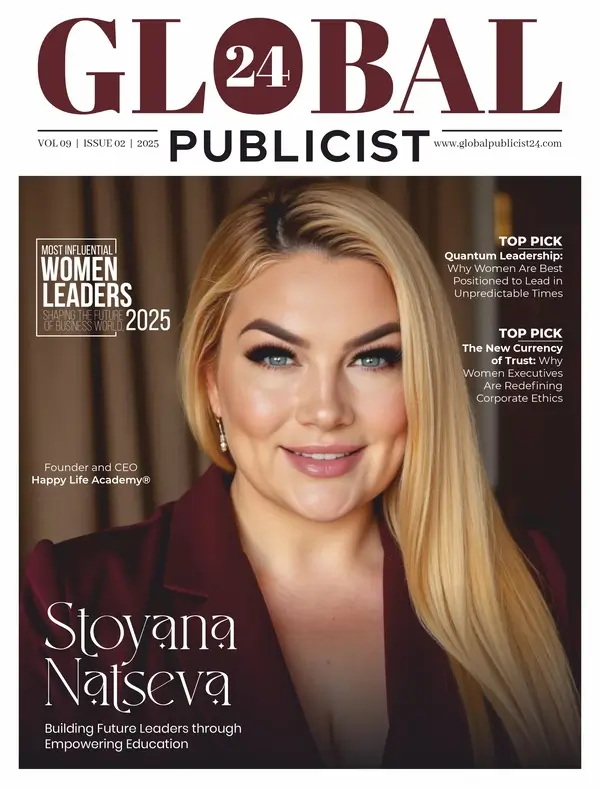The global beauty industry is experiencing a profound transformation-one that’s being led not by brands, but by consumers. As awareness around environmental, ethical, and health concerns grows, so does the influence of the conscious consumer. These shoppers are no longer driven solely by product performance or packaging. They want transparency, sustainability, inclusivity, and purpose. This shift in behavior is reshaping the way beauty brands operate, market, and innovate.
Understanding the conscious consumer is key to navigating the future of beauty. Their choices reflect deeper values, and their influence is forcing both legacy and indie brands to rethink their strategies. This article explores who these consumers are, what drives them, and how their evolving expectations are changing the face of beauty forever.
Who Is the Conscious Beauty Consumer?
A conscious beauty consumer is someone who actively considers the ethical, environmental, and social impact of the products they purchase. This consumer is informed, engaged, and intentional. They prioritize:
- Clean ingredients free from harmful chemicals
- Cruelty-free and vegan formulations
- Sustainable packaging and eco-friendly sourcing
- Transparency in brand practices and labeling
- Diversity and inclusion in marketing and shade ranges
This consumer is not just a trend follower-they are values-led. They research ingredients, investigate brand ethics, and often share their insights with others. Social media and online platforms have empowered them to hold brands accountable like never before.
Why the Shift Is Happening Now
Several global factors have accelerated the rise of conscious consumption in beauty:
- Climate Change and Environmental Awareness
The growing threat of climate change has made consumers more aware of the ecological footprint of their purchases. Single-use plastics, water waste, and unsustainable sourcing are major red flags for modern buyers.
- Health and Wellness Trends
Today’s consumers are highly health-conscious. They scrutinize product labels, avoid synthetic additives, and favor natural or organic formulations. The belief that beauty products should support overall well-being is becoming the norm.
- Animal Rights and Ethical Sourcing
Cruelty-free beauty is now a baseline expectation. Consumers want assurance that their products were not tested on animals and that raw materials were ethically sourced, respecting both people and planet.
- Social Justice and Inclusivity
The call for diversity and representation is louder than ever. Consumers demand products that cater to all skin tones, genders, and ages. Brands that ignore this are seen as outdated or out of touch.
Key Behaviors of Conscious Beauty Shoppers
To meet the needs of conscious consumers, beauty brands must understand the behaviors that define this segment:
- Ingredient Scrutiny
Clean beauty is more than a label-it’s a mindset. Conscious shoppers look beyond branding to study product ingredients. They avoid parabens, sulfates, synthetic fragrances, and toxic preservatives. Instead, they seek botanicals, non-toxic compounds, and clinically backed actives.
- Demand for Transparency
This consumer wants to know what’s inside the product, where it was made, who made it, and how. Clear, honest labeling and supply chain transparency are non-negotiable. Misleading terms or greenwashing tactics are quickly called out and criticized.
- Preference for Refillable and Recyclable Packaging
Packaging plays a critical role in purchasing decisions. Conscious consumers prefer minimal, recyclable, or biodegradable materials. Refillable packaging and take-back programs are increasingly seen as must-haves.
- Support for Purpose-Driven Brands
Values drive loyalty. Consumers are more likely to support brands that align with their ethics-whether that’s fighting ocean plastic, supporting women-led initiatives, or advocating for fair trade.
- Selective Spending
Rather than buying more, these consumers are choosing better. They focus on high-quality, multi-functional products, often from smaller or indie brands that prioritize craftsmanship and integrity.
How Beauty Brands Are Responding
The conscious consumer is influencing every level of the beauty business, from product development and branding to logistics and marketing.
Clean and Green Formulations
More brands are formulating products without harsh chemicals and embracing plant-based, organic, and dermatologist-approved ingredients. The emphasis is on safety, efficacy, and sustainability.
Sustainable Supply Chains
Ethical sourcing is being integrated into procurement strategies. Brands are working with certified suppliers, supporting local communities, and reducing their carbon footprint by shortening supply chains and opting for renewable energy.
Inclusive Branding and Shade Ranges
A growing number of companies are expanding their shade ranges and featuring diverse models in campaigns. Inclusivity is no longer a niche effort but a core brand requirement.
Third-Party Certifications
To build trust, many brands are now seeking third-party certifications such as cruelty-free, vegan, organic, or B Corp. These certifications act as a seal of integrity and transparency.
Tech and Innovation
Technology is also playing a part. Brands are using AI to offer personalized skincare, developing apps that scan product ingredients, and creating digital campaigns that emphasize accountability and traceability.
The Rise of Indie and Disruptor Brands
Indie beauty brands are leading the conscious revolution. With agility and a strong sense of mission, they often outperform established players when it comes to sustainability and ethics. Consumers are drawn to their transparency, storytelling, and authenticity.
These disruptors often start with a purpose-whether it’s zero-waste packaging, gender-neutral products, or sourcing ingredients from women-owned cooperatives. Their direct-to-consumer approach also helps build community and trust.
Marketing to the Conscious Consumer
To connect with conscious shoppers, brands need to do more than sell-they need to educate, engage, and empower.
- Storytelling should focus on purpose, process, and people behind the product.
- Content marketing can highlight ingredient sourcing, ethical practices, and environmental impact.
- Social proof from real customers, influencers, and reviews adds credibility and authenticity.
It’s important to avoid performative messaging. Conscious consumers are savvy and can easily spot inauthentic efforts. Transparency and action matter more than perfect branding.
The Long-Term Impact on the Industry
The conscious consumer is not a temporary phenomenon-it represents a fundamental change in buying behavior. As this mindset becomes more widespread, brands that fail to evolve may lose relevance.
Those that succeed will be the ones that embrace purpose as part of their core business strategy-not just a marketing tactic. Beauty will continue to shift from vanity-driven ideals to wellness, sustainability, and empowerment.
This evolution presents a unique opportunity for the industry to lead by example-proving that it’s possible to be beautiful, ethical, and conscious all at once.
Conclusion
The rise of the conscious consumer is reshaping the beauty industry from the inside out. Consumers are no longer passive buyers-they are active participants, holding brands accountable and demanding better choices for themselves and the planet.
From clean ingredients and cruelty-free practices to sustainable packaging and ethical sourcing, every aspect of the product lifecycle is under scrutiny. This shift challenges brands to innovate with integrity and deliver real value beyond aesthetics.
For beauty businesses that are ready to listen, adapt, and lead with purpose, the conscious consumer presents not a challenge-but a remarkable opportunity.















